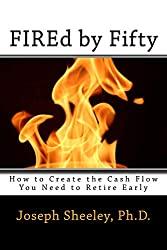
Photo by Stijn Dijkstra on Pexels.com
" data-orig-size="979,1300" data-image-title="oxen bulls fighting" data-orig-file="https://smallivy.files.wordpress.com/2023/04/pexels-photo-14297722.jpeg" data-image-description="" data-image-meta="{"aperture":"0","credit":"","camera":"","caption":"","created_timestamp":"0","copyright":"","focal_length":"0","iso":"0","shutter_speed":"0","title":"","orientation":"0"}" data-medium-file="https://smallivy.files.wordpress.com/2023/04/pexels-photo-14297722.jpeg?w=226" data-permalink="https://smallivy.com/2023/04/29/should-you-invest-in-dividend-stocks/pexels-photo-14297722/" alt="" class="wp-image-23262" data-large-file="https://smallivy.files.wordpress.com/2023/04/pexels-photo-14297722.jpeg?w=723" />Photo by Stijn Dijkstra on Pexels.comIf you spend any time scrolling through the personal finance side of Twitter, affectionately known as FinTwit, you’ve no doubt seen accounts extolling the virtues of investing in diviedend-paying stocks, or simply “dividend stocks.” There are dozens of accounts, many with huge followings, that post on which dividend stocks and high-yield funds they’re buying. When a company pays a dividend, they’ll talk about getting a check for $238 in their account or something. Many accounts talk about building up their positions until their dividends reach some desired level so that they can “Retire, and get off the grid.”
If you’re a relatively new investor, you may be wondering what dividends are and what all of the excitement is about. Even if you’re a fairly seasoned investor, you may be wondering if dividends are something you should be chasing. Today we’ll talk about dividend stocks and some of the advantages and disadvantages.
Hey – if you like The Small Investor, help keep it going. Buy a copy of the SmallIvy Book of Investing: Book1: Investing to Grow Wealthy or just click on one of the product links below, then browse and buy something you need from Amazon’s huge collection. The Small Investor will make a small commission each time you buy a product through one of our links.
If you do use mutual funds and are looking for ways to choose types of funds, check out my new mini-book, Sample Mutual Fund Portfolios. It goes through fund allocations for different types of accounts, from 401ks and IRAs to college accounts, saving up for things and accounts for spending during your retirement years or other times where you’re using money from a portfolio to fund your lifestyle.

What is a dividend?
Obviously, the goal of any business is to earn money by receiving more in sales than they spend in production of their products and services. A company that breaks even can survive for a while, but companies must become profitable to survive long-term and provide anything of value to their owners. In the case of larger companies and corporations that have sold shares of stock, these owners are the company shareholders.
Once profitable, a corporation has three choices of what they can do with the extra money they make. They can:
- Reinvest the money in the company, buying equipment, buildings and real-estate, supplies, technology and computer systems. They may even acquire competing or complementary businesses to expand into new areas and eliminate competitors. Done properly, this will allow the company to grow and produce even bigger profits in the future.
- Pay bonuses or increase salaries of executives and workers. This is needed to keep a strong workforce, at least to the extent that other companies are doing the same. Like anything, it can be overdone, however, where the comployees are happy but the shareholders are unhappy because they’re paying more but not getting additional value. When this occurs, share price normally declines as shareholders sell out and certain shareholders may take actions such as working to appoint new directors or replace the CEO. Gross abuse can be seen as “looting,” resulting in lawsuits and possibly even criminal sanctions.
- Pay out profits to shareholders. One way this is done is to buy back shares of the company, reducing the number available and thereby increasing earnings per share, possibly resulting in the price of the stock going up. The second way is for the company to send out a payment to shareholders directly. This payment is called a dividend. The ratio of the dividend per year to the share price is called the yield. For example, if a company selling for $100 pays out a $5 dividend per year, the yield would be 5%. Most comapnies pay out dividends quarterly, but some pay out only one or two times per year. Some comapnies also pay out a special dividend at the end of the year based on extra income they have gained.

Want all the details on using Investing to grow financially Independent? Try The SmallIvy Book of Investing.
Are dividends good or bad?
The answer to this question is really that they are both bad and good. In a lot of ways, dividends don’t matter and might even make an investment less attractive. But there are times when having a stock that pays dividends can be useful. For example, if you’re needing to pay for something out of your investment account, you can use the cash from dividends directly rather than needing to sell shares, possibly when they are depressed, and pay brokerage fees for selling. There are also things about a company needing to pay out dividends that cause some advantages. Some facts about dividends:
Dividends aren’t extra money: Some people see dividends as “free money” since when they receive the payout, they still have their shares but they also now have some cash. But as discussed above, a dividend is money that the company has earned being paid out. While it has the cash, it is an asset of the company. Once it pays out the dividend, it no longer has that asset. This means that the book value (defined as the value of the company if you were to sell all of its assets off right now) goes down by the amount of the dividend.
Share prices actually reflect this. After the last day where you can purchase shares and still receive the dividend (called the ex-dividend date), the share price will often decline roughly in line with the amount of the dividend. For example, if the company pays out an 8% dividend, or 2% per quarter, it wouldn’t be unusual to see the share price decline by 2% after the ex-dividend date. The price drops because 2% of the company is going to handed out to the people who owned shares the day before or earlier, so new buyers value the company at a lower price. This change can be masked by other events that happen during the day that affect share price, but it definitely has a drag on price. If you have a limit order in on ex-dividend date that hasn’t executed, your brokerage may even drop your limit automatically to account for the dividend.
Dividends don’t increase your returns: Fundamentally, it doesn’t matter if a stock pays out a dividend or not when looking at total returns. If a company pays a dividend, your return is the dividends plus the increase in share price, which is roughly correlated to increase in the value of the company. If it doesn’t pay a dividend, you’ll only receive a gain due to the increase in share price, but because the company has held onto the cash and reinvested it, the value of the company should have increased more than it would have if a dividend were paid. So, your capital gain will be higher, roughly in line with the dividend that wasn’t paid.
It therefore doesn’t make sense to buy a stock just because they have a good dividend if total return is your concern. It doesn’t matter. In fact, a company not paying a dividend will have a higher return on average than one that does not since it probably means the company is growing faster than those that do pay dividends. They have somewhere good to put the money, so they reinvest rather than paying out to shareholders.
Dividends aren’t guaranteed returns: Some people assume when they buy a stock paying a 4% dividend, for example, that they’re going to get that return on their initial investment each year, plus whatever capital gains and dividend growth comes with it. But the fluctuations in stock price will typically have an outsized effect on total returns. It is nothing for a stock to go up or down 5% or 15% in price in a week or even a day. When big things happen, stocks can go up or down 50% or more in a short period of time. Sometimes nothing really happens to the company but people just decide they like or hate the stock for a while and act accordingly. Stock prices are also carried by the general sentiment of the market, so nothing may happen to your company but wider market issues or political issues may cause it to rise or fall dramatically. The payout you receive from the company may be nothing compared to the change in price of the shares.
Dividends can also be reduced or eliminated at the whim of management. If a company gets into tough financial times, the dividend is often the first thing to go. This is particularly true in the modern age where comapnies are seen more as providers of income to workers for the public good than pure investments, so public sentiment tends to turn against companies that still pay out a lofty dividned while laying off workers or cutting pay. There is no guarantee that you will receive whatever the dividend was when you bought the shares indefinitely.

Check out my latest book on how to supercharge your finances, FIREd by Fifty: How to Create the Cash Flow You Need to Retire Early.
Good things about dividends
There are some good things about dividend paying stocks. These include:
Stocks paying dividends tend to be safer: Stocks that don’t pay dividends are often young companies still in their growth phase. As discussed above, this often means higher returns, but it can also mean weaker financials. These companies probably have one or two product lines, may have taken on a good deal of debt, and aren’t in many locations. They therefore may be one downturn or corporate mistake away from bankruptcy. Many of these companies choose not to pay a dividend because they need all of the cash they can get to fund operations and growth.
It is after companies get big and have steady revenues from product lines that they typically start to pay a dividend. They have clearly established that they have products or services that people will buy and that they know how to sell those products. A big, diversified company that is in the financial condition needed to pay out dividends will be able to weather a recession or missteps by management better than a younger company with fewer resources. In many ways, this makes these companies “safer” than those that pay no dividend.
That said, things can change. Consumer tastes can change, particularly in the fashion and technology areas where products are a fad for a time and then are discarded for the next big thing. People can also make big mistakes at big companies that bring things down. Companies also get harder to manage as they get bigger or the founder/visionary may step away from the company, causing it to lose the passion and vision it once had. Companies don’t like to cut dividends if they can avoid it; however, since it often makes shareholders upset to cut dividends, a company that declares a dividend will likely have recurring, predictable profits that make the stock more solid.
Divdends tamp down corporate excess: One benefit of dividends is that they force the company to return at least something to the shareholders. (Note, the same does not seem to be true about stock buy-backs, which seem to just incentivize the company to issue more options to executives.) As companies start to generate more income, executive salaries increase, perks grow, desks go from pine to walnut, and suddenly the company needs a corporate jet or two. They see that money sitting there after they pay for operations and think. “Why not, we can afford it.”
When a company has a dividend to pay, it forces the executives to see return of money to the shareholders as an expense on the books. Suddenly they need to figure out where to find $400M and send it out, meaning that the amount of money they have to do other things with decreases. In a lot of ways this is like the “pay yourself first” concept where you put money away into savings or investments before you do anything else to make sure it gets done. Many companies also like to grow the dividend after they start paying one, so as the company grows, the bill gets bigger and there is less money to be wasted.
Steadily growing dividends indicate a good company: If a company is able to grow its dividend regularly, it usually indicates that it is well run and has been able to grow its business. Also, executives who create a growing dividend tend to want to keep it growing as a source of pride, so they’ll be focused on ways to expand business and keep earnings growing so that they can keep the dividend growing. Even better is a company that has executives who have a significant ownership in the company with a growing dividend. This means that making you more money makes them more money.
Companies that increase their dividends year after year are especially rare. These can be great stocks to own because they obviously are well run and have shareholder interests as a focus. The growing dividend means that your payments will grow and become significant when compared to payments you could get from bonds over time. A list of stocks that have grown dividends for over 25 years is here.

Bad things about dividends
These stocks tend to be slower growers: A company will typically not create a dividend until they’ve already grown quite a bit. The larger a company is, the harder it is for them to do things like double earnings, which is typically what needs to happen for share price to double. A small company can more easily double earnings every few years, causing the stock to rise rapidly and steadily. By the time a company is paying a significant dividend, the share price is often fairly steady with just fluctuations due to market conditions and interest rate changes. Yes, you will still see share price increases if you hold long enough, but growth will not be nearly as fast as you’ll see with younger companies.
Taxes: If you hold stocks in a taxable account, you’ll need to pay taxes on dividends each year. This is true even if you reinvest the money you receive. Tax rates also may be higher for earnings from dividends than they are for capital gains. Capital gains also allow you to do things like time when you take gains and offset gains with losses in tax-loss harvesting strategies.
A good way to prevent having your nest egg eaten away by taxes each year is to put dividend paying stocks in your tax-free or tax-deferred accounts like IRAs and 401ks (Roth or standard) or, even better, HSAs, and then keep only low or no dividend-paying growth funds in your taxable accounts. If you do have expenses that you regularly pay from a taxable account, you can keep some dividend stocks in that account since you’ll be taking money from the account anyway and dividends can be a source of cash that doesn’t require you sell stocks, perhaps at a reduced price because of when you need the money. Still, you should consider the tax rates for dividends versus the tax rates for capital gains when decisding whether or not to put dividend stocks in your taxable accounts. Realize also that timing when you realize capital gains can be an advantage for taxes which is lost when you use dividend stocks.
Have a burning investing question you’d like answered? Please send to [email protected] or leave in a comment.
Follow on Twitter to get news about new articles. @SmalllIvy
Disclaimer: This blog is not meant to give financial planning or tax advice. It gives general information on investment strategy, picking stocks, and generally managing money to build wealth. It is not a solicitation to buy or sell stocks or any security. Financial planning advice should be sought from a certified financial planner, which the author is not. Tax advice should be sought from a CPA. All investments involve risk and the reader as urged to consider risks carefully and seek the advice of experts if needed before investing.
